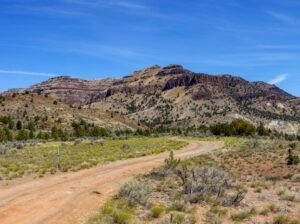 In 2003, Bruce Babbitt, former Secretary of the Interior, observed, “The day is coming, I believe, when the Bureau of Land Management (BLM), so often dismissed as the Bureau of Livestock and Mining, will be better known as the Bureau of Landscapes and Monuments.”[1] Twenty years later, it is still uncertain whether Babbit’s statement was prescient or aspirational. However, the BLM appears poised to take a meaningful step toward the latter moniker.
In 2003, Bruce Babbitt, former Secretary of the Interior, observed, “The day is coming, I believe, when the Bureau of Land Management (BLM), so often dismissed as the Bureau of Livestock and Mining, will be better known as the Bureau of Landscapes and Monuments.”[1] Twenty years later, it is still uncertain whether Babbit’s statement was prescient or aspirational. However, the BLM appears poised to take a meaningful step toward the latter moniker.
This spring, the BLM proposed new regulations, officially referred to as the Public Lands Rule. According to the BLM’s website, the purpose of the proposed rule is to “establish a framework for protecting and restoring healthy landscapes, abundant wildlife habitat, clean water, and balanced decision-making on our nation’s public lands.” The prominent news outlet E&E News referred to the proposed regulations as a “seismic shift.”
Unsurprisingly, the proposed rule generated mixed reviews. The American Exploration & Mining Association called it “vague, counterproductive, and illegal.” The Outdoor Alliance praised it as offering “real ways for the BLM to balance conservation with extraction and development.” One of the more controversial elements of the proposed rule was possibility that the BLM would begin issuing “conservation leases.” Perhaps for this reason, the proposed regulations garnered a nickname—the Conservation Rule. Detractors have attacked the rule as lacking statutory authority, particularly the provisions regarding conservation leasing.
In an article published by the Environmental Law Reporter last week, I explored the statutory support for the BLM’s proposed regulations. BLM’s Conservation Rule, and Conservation as a “Use.” The article discusses the Federal Land Policy and Management Act (FLPMA), which is BLM’s organic statute, as well as a brief history of its passage. Each of these demonstrate that conservation is inherent in BLM’s statutory mandate, Moreover, two indisputable trends justify BLM’s decision to manage for ecosystem resilience and to formalize conservation uses on public lands. The first is deteriorating land health conditions that are likely to be further exacerbated by climate change. The second is the emergence of new, valuable land uses, including mitigation banks and conservation markets.
The article concludes as follows:
Aldo Leopold observed that the best definition of “conservation” “is written not with a pen, but with an axe.”[2] “A conservationist is one who is humbly aware that with each stroke he is writing his signature on the face of his land.” Unsurprisingly, Leopold’s definition of “conservation” recognized that conservation is a form of management. It is “a matter of what a man thinks about while chopping, or deciding what to chop.”
Whether characterized as the Bureau of Livestock and Mining or the Bureau of Landscapes and Monuments, BLM’s management decisions indeed leave a signature on the face of the land. As a result, the proposed Public Lands Rule does not write on a blank slate. In response to the scars left on public lands by extractive uses, it proposes restoration. In response to escalating development that fragments wildlife and fish habitat, it recognizes the value of the remaining intact landscapes. In response to biodiversity loss, it incorporates ecosystem resilience. In response to emerging market opportunities for conservation and mitigation, it formalizes these uses through conservation leases. Each of these goals is achieved through BLM’s traditional tools of land use planning, leasing, and permitting. The management priorities and actions set forth in BLM’s proposed Public Lands Rule are an appropriate response to the “changing needs and conditions” on public lands and consistent with BLM’s statutory duties articulated in FLPMA.
This blog post is based on an article published by Environmental Law Reporter last week, BLM’s Conservation Rule, and Conservation as a “Use.”
 Jamie Pleune is an associate professor of law (research) and a member of the Law and Policy Group in the Wallace Stegner Center.
Jamie Pleune is an associate professor of law (research) and a member of the Law and Policy Group in the Wallace Stegner Center.
[1] Bruce Babbitt, The Heart of the West: BLM’s National Landscape Conservation System, in Michael P. Dombeck et al., From Conquest to Conservation: Our Public Lands Legacy 101 (2003).
[2] Aldo Leopold, A Sand County Almanac and Sketches Here and There 67-68 (1949).
